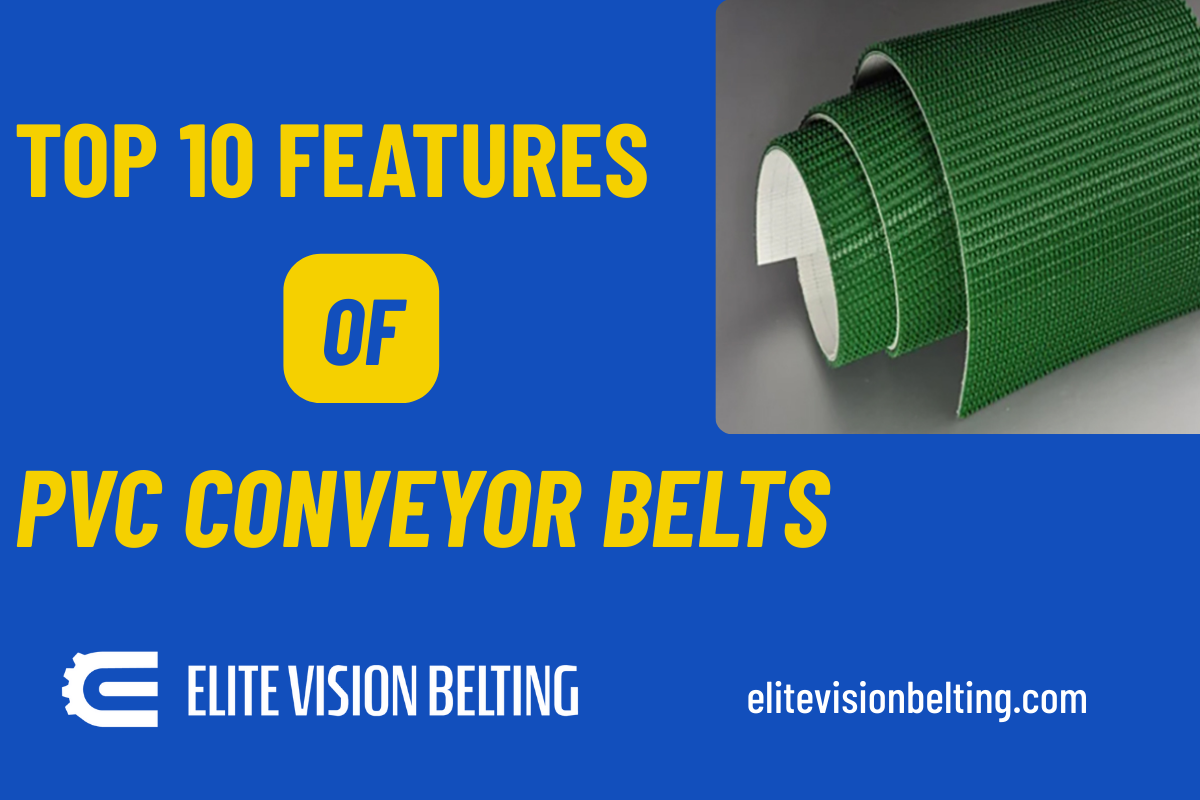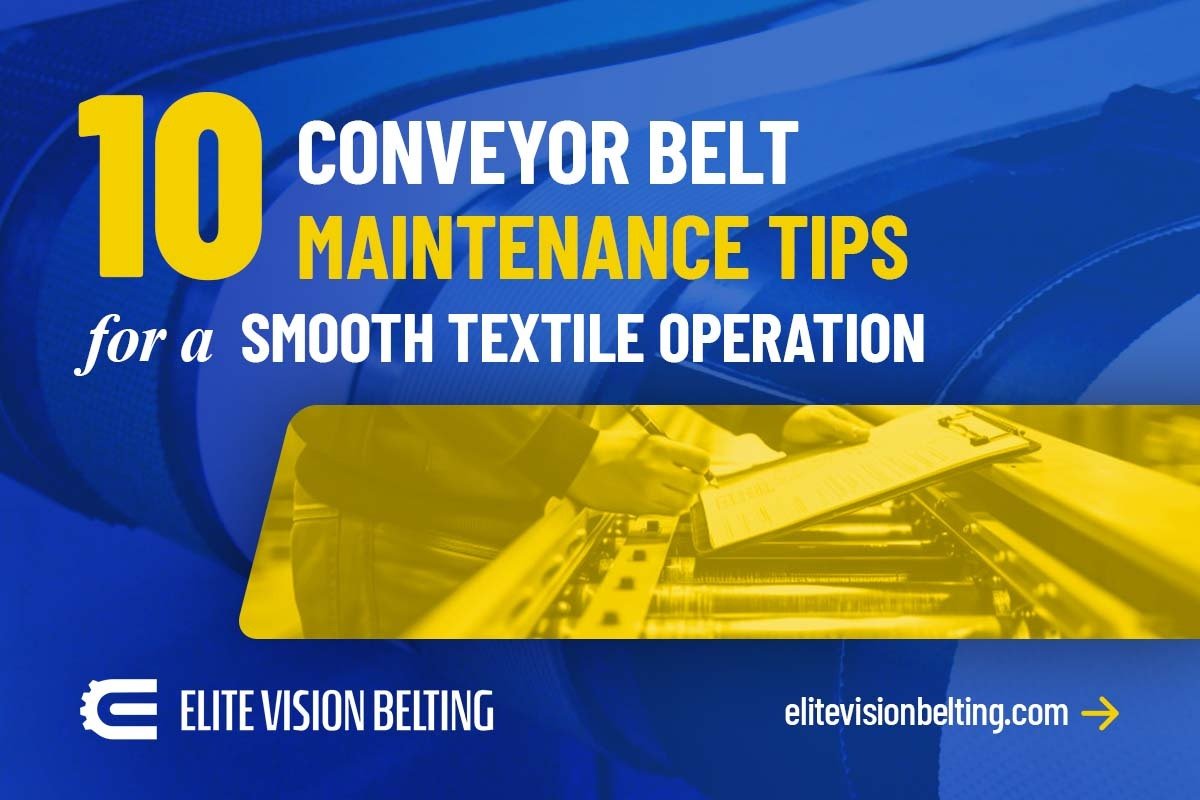The textiles industry conveyor belts are critically important assets. They efficiently move vast amounts of materials through production stages.
Smooth, uninterrupted operation is truly essential for daily output. Neglecting these systems quickly leads to costly disruptions. Applying proper conveyor belt maintenance tips offers many benefits.
This comprehensive guide details ten crucial strategies. Implement these for a perfectly smooth textile operation. Your productivity will significantly improve, ensuring peak performance.
Why Maintenance Matters So Much
Conveyor belts work continuously, day after day. They face constant stress from heavy loads. Dust, fibers, and varying temperatures exist. These environmental factors take a toll on belts. Without proactive care, wear accelerates rapidly.
Unexpected breakdowns bring production to a halt. This downtime causes significant financial losses. Repair costs also add to expenses.
Damaged belts can compromise product quality. Poor material handling results in defects. Worker safety might also be jeopardized.
Thus, diligent maintenance is incredibly vital. It protects your investment and ensures efficiency.
1. Regular, Thorough Visual Inspections
Perform routine visual checks on all belts. Look for any signs of damage. Check for cuts, tears, or fraying edges. Observe the belt surface carefully for abrasions.
Examine the underside for signs of wear. Note any unusual marks or deformations. Pay attention to belt tracking issues. Inspect rollers and idlers for smooth rotation.
This proactive scanning identifies small problems early. Addressing them prevents major failures later. It is a foundational conveyor belt maintenance tips step.
2. Implement Effective Cleaning Protocols
Fibers, dust, and debris accumulate on belts. This buildup can affect performance. It might cause slippage or tracking problems.
Regular cleaning prevents these issues completely. Use appropriate methods for your belt material. Avoid harsh chemicals that damage surfaces.
Ensure cleaning schedules are strictly followed. Cleaners and scrapers should be efficient. Proper cleaning extends belt lifespan significantly.
It ensures the textiles industry conveyor belts run cleanly.
3. Ensure Precise Belt Alignment
Misaligned belts create many serious problems. They can cause excessive edge wear. This leads to premature belt failure.
Misalignment also increases energy consumption. Rollers and bearings suffer unnecessary stress. Check belt alignment regularly and carefully.
Adjust tension and tracking as needed. Use specialized tools for accurate alignment. Proper alignment prevents costly repairs.
It is a critical aspect of conveyor belt maintenance tips. Keep belts running perfectly straight.
4. Maintain Optimal Belt Tension
Correct tension is absolutely crucial for belts. Too little tension causes belt slippage. This creates excessive wear and reduces efficiency.
Too much tension stresses the belt material. It also strains bearings and other components. Follow manufacturer guidelines for tension settings.
Use tension gauges for precise measurements. Adjust tension periodically as needed. Temperature changes affect belt material tension.
Optimal tension prolongs belt life significantly. This ensures your textiles industry conveyor belts perform well.
5. Adhere to a Strict Lubrication Schedule
Many moving parts require proper lubrication. Rollers, bearings, and gears need oil. Insufficient lubrication causes increased friction.
This leads to overheating and premature wear. Develop a comprehensive lubrication schedule. Use only recommended lubricants specifically.
Apply them precisely to designated points. Avoid over-lubricating, which attracts dust. Proper lubrication reduces energy consumption.
It extends component lifespan considerably. This is a vital part of conveyor belt maintenance tips.
6. Conduct Regular Component Checks
Beyond the belt itself, check all components. Inspect rollers, idlers, and pulleys thoroughly. Look for any signs of wear or damage.
Check bearings for smooth, quiet operation. Listen for any grinding or squeaking sounds. Examine drive motors for proper function.
Ensure all guards and safety features are intact. Replace worn or damaged parts promptly. Early replacement prevents cascading failures.
This extends the entire system's life. It keeps your textiles industry conveyor belts reliable.
7. Verify Splicing Integrity Regularly
Belt splices are often the weakest points. They are vulnerable to stress and fatigue. Inspect all splices for signs of separation. Look for frayed edges or delamination.
Check for any cracks or unusual bulges. Repair or replace failing splices immediately. Weak splices can lead to catastrophic belt failure.
Use appropriate splicing techniques. Proper splicing ensures belt continuity and strength.
This is a very specific conveyor belt maintenance tips point.
8. Consider Environmental Factors
The operating environment greatly impacts belts. Temperature fluctuations affect materials. High humidity can cause material degradation.
Dust and debris levels are also important. Protect belts from harsh elements where possible. Implement climate control if necessary.
Provide adequate ventilation always. Environmental awareness extends belt longevity. It keeps the textiles industry conveyor belts protected.
Adapt maintenance plans to environmental stress.
9. Train Your Maintenance Personnel
Well-trained staff are incredibly valuable assets. They understand proper maintenance procedures. Teach them about safe operation and troubleshooting.
Provide regular refreshers and new training. Empower them to identify problems early. Ensure they use correct tools and techniques.
Knowledgeable staff prevent costly mistakes. They maximize efficiency and reduce downtime. Investing in training pays significant dividends.
This is one of the most effective conveyor belt maintenance tips.
10. Develop a Preventive Maintenance Plan
Reactive maintenance is always expensive. It means fixing problems after they occur. A proactive approach saves money and time.
Develop a comprehensive preventive plan. Schedule all inspections and tasks regularly. Document all maintenance activities meticulously.
Track wear patterns and component lifespans. Use data to optimize future schedules. This systematic approach ensures maximum uptime.
It makes your textiles industry conveyor belts incredibly resilient.
Benefits of Proactive Maintenance
Implementing these tips offers many benefits. Your operations will run much smoother. Downtime due to breakdowns will decrease sharply.
You will save money on emergency repairs. The lifespan of your belts will extend greatly. Product quality will remain consistently high.
Worker safety will also significantly improve. Overall operational efficiency will increase. A well-maintained system boosts profitability.
It ensures a competitive advantage always.
Conclusion
Maintaining textiles industry conveyor belts is an ongoing process. It requires diligence and consistent attention.
These ten conveyor belt maintenance tips provide a solid framework. Adopt them as core operational practices. Your textile facility will operate with greater reliability.
Enjoy increased efficiency and reduced costs. Proactive care ensures a smooth and productive future.
Begin implementing these strategies today for success.
Need belts that last longer and perform better? Choose Elite Vision Belting Today.

.png)
.png)

.jpg)
